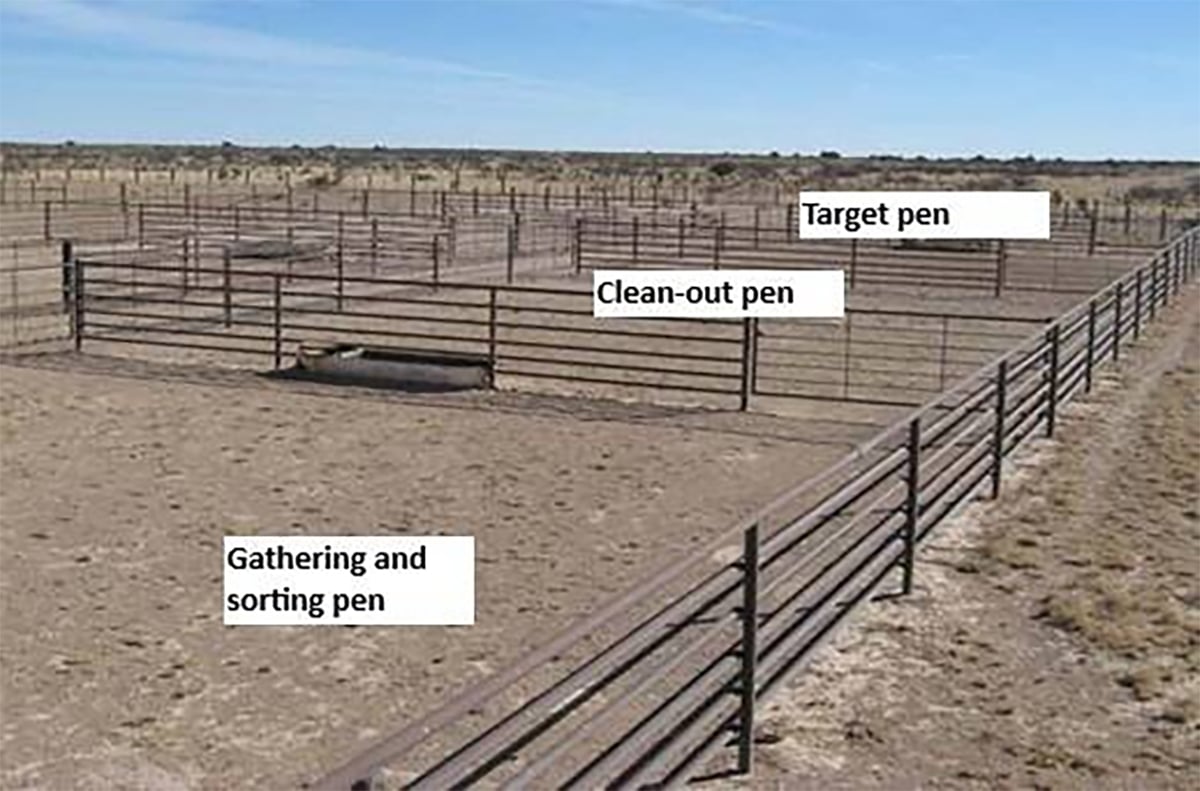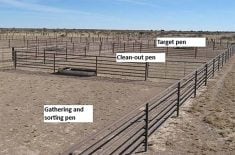CATTLE ON FEED
The lower supply of cattle across Canada was reflected in Canfax’s Alberta and Saskatchewan July cattle-on-feed report.
As of July 1, 803,936 were placed in feedlots. This is up two percent from the same time last year but 13 percent lower than the June 1 report.
Placements overall for the year are down one percent from 2010 and 15 percent lower than 2009, making 2011 the second lowest number in 10 years. Most placements were in the 800 pound range.
FEEDER PRICES HOLD
Read Also

Teamwork and well-designed handling systems part of safely working cattle
When moving cattle, the safety of handlers, their team and their animals all boils down to three things: the cattle, the handling system and the behaviour of the team.
Canfax reported that prices for mid-weight feeder steers and heifers traded steady with short keep cattle showing the highest demand. Those weighing more than 900 lb. were bid up three percent from last week at $115.75 per hundredweight.
The overall average steer price was up $1.39 per cwt. and heifers were up $2.83 per cwt.
Some wide price spreads were noted between Alberta and Ontario.
Alberta steers in the 600-700 lb. range averaged $138.50, and the 700-800 lb. category was $128.80 per cwt.
Ontario steers were $5 lower in those two classes, but those weighing 800-900 lb. traded at a $5 premium to Alberta at $127.60 per cwt.
Alberta heifers in the 600-700 lb. range averaged $127.92 per cwt., while Ontario bids averaged $117.51. The 700-800 lb. group was the same at $126.36 per cwt. while those weighing 800-900 lb. were $115.20 in Alberta and $109.28 in the East.
Canadian feeder exports are down by more than half compared to last year. Fewer than 1,000 were shipped to the United States last week.
FED CATTLE RALLY
Fed cattle rallied with average prices up $2.50 per cwt. from the previous week. These continue to be the highest July fat prices on record.
Live Alberta steers traded at $102-$105 per cwt. to average $103.97 while the Ontario range was greater at $99.33-$114.65. Alberta offered $173-$176 per cwt. on the rail and Ontario was $182-$188.
Slaughter statistics show numbers continue to decline because fewer cattle were available across the country. Nearly 1.5 million head within all classes have been killed so far this year.
Canfax reports that 13 percent fewer steers and 10 percent fewer heifers have gone to market compared to 2010, reducing domestic meat supplies by 13 percent.
Carcass weights are steady over the last year. Steer carcasses are averaging 835 lb. and heifers are 742 lb.
U.S. packer interest continues and 5,040 head were exported. However, this is down by more than one-third from last year.
COW TRADE
No bred heifer or bred cow prices were available, but cow-calf pairs were trading at $1,300-$1,700.
Fewer cows and bulls have gone to the meat market. Only 246,000 cows have been processed and less than 12,000 bulls were killed in the first half of this year.
In addition, the cow and bull trade is experiencing softer prices with a $2 per cwt. decline. D1, D2 cows averaged $70.94 and D3, D4 cows were $64 per cwt. No bull prices were available.
BEEF RISING
Canadian cutout values for the week ending July 8 were moderately higher. The AAA/AA price spread was $2.10. Montreal wholesale for next week’s delivery is expected to go up $2 to $195-$197 per cwt.
The AAA cutout value as of July 8 was $170.49 compared to $152.65 last year at this time. The AA cutout was $168.39, up from $150.63.
This cattle market information is selected from the weekly report from Canfax, a division of the Canadian Cattlemen’s Association. More market information, analysis and statistics are available by becoming a Canfax subscriber by calling 403-275-5110 or at www.canfax.ca.














